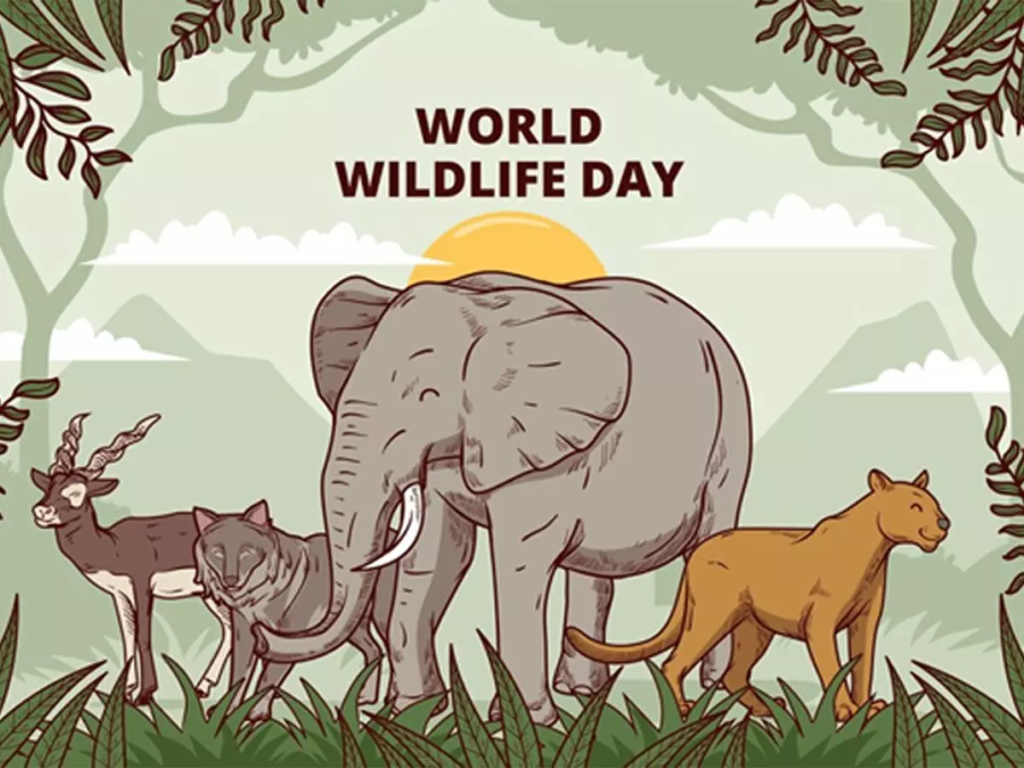
This World Wildlife Day, let’s pause for a moment—not just to appreciate the incredible creatures we share this planet with, but to acknowledge those that are quietly vanishing. Some are majestic icons of the wild. Others, you’ve probably never heard of. All of them have one thing in common: they need us now more than ever.
Table of Contents
- Amur Leopard – The Ghost of the Forest
- Vaquita – The Rarest Sea Creature on Earth
- Javan Rhino – Asia’s Hidden Giant
- Kakapo – The Owl-Parrot That Forgot to Fly
- Pangolin – The Most Trafficked Mammal
- Saola – The Asian Unicorn No One Can Find
- Hawksbill Turtle – Beauty at Risk
- Axolotl – The Smiling Survivor
- Philippine Eagle – The Raptor of the Rainforest
- Snow Leopard – The Phantom of the Peaks
1. Amur Leopard – The Ghost of the Forest
Found in the Russian Far East, the Amur leopard is one of the world’s rarest big cats, with fewer than 100 individuals left in the wild. Its thick spotted coat helps it survive the harsh winters, but it offers no protection from habitat loss and poaching. These leopards are fast, powerful, and heartbreakingly close to disappearing forever.
2. Vaquita – The Rarest Sea Creature on Earth
The vaquita, a tiny porpoise species native to the Gulf of California, is balancing on the edge of extinction. With fewer than 10 individuals estimated to remain, this shy marine mammal is a victim of illegal fishing practices. Saving it requires swift international action and, more importantly, awareness.
3. Javan Rhino – Asia’s Hidden Giant
Once found across Southeast Asia, the Javan rhinoceros now survives in just one small corner of Indonesia. With thick armor-like skin and a single horn, this species is quietly holding on in dense tropical forests. It’s not just rare—it’s barely known, and that’s part of the problem.
4. Kakapo – The Owl-Parrot That Forgot to Fly
The kakapo is one of New Zealand’s strangest birds—a large, flightless, nocturnal parrot that smells sweetly of flowers. Once nearly wiped out by predators brought by humans, this quirky bird has been rescued from the brink by intense conservation. But its future still hangs in the balance.
5. Pangolin – The Most Trafficked Mammal
Covered in protective keratin scales, the pangolin looks like a walking pinecone. Sadly, it is also the world’s most illegally trafficked mammal. Hunted for its scales and meat, pangolins are now critically endangered. Quiet, solitary, and mostly nocturnal, their disappearance is happening out of sight—and often out of mind.
6. Saola – The Asian Unicorn No One Can Find
Nicknamed the “Asian Unicorn,” the saola is one of the most mysterious animals on the planet. Discovered only in 1992, it lives in the dense forests of Laos and Vietnam. No one knows exactly how many remain, because sightings are so rare. The saola is vanishing before we’ve even had a chance to understand it.
7. Hawksbill Turtle – Beauty at Risk
With their stunningly patterned shells, hawksbill sea turtles have long been targeted for the illegal “tortoiseshell” trade. Though they play a crucial role in maintaining healthy coral reefs, their population has dropped dramatically due to hunting, climate change, and plastic pollution. They are beautiful—and they are in danger.
8. Axolotl – The Smiling Survivor
The axolotl, a Mexican amphibian that retains its larval features throughout life, looks like a creature straight out of a fantasy novel. With the ability to regenerate limbs and a permanent “smile,” it has fascinated scientists for decades. But habitat loss in the canals of Mexico City has pushed this wonder to the edge of extinction in the wild.
9. Philippine Eagle – The Raptor of the Rainforest
Also known as the “Monkey-eating Eagle,” the Philippine eagle is one of the largest and most powerful eagles on Earth. With only around 400 breeding pairs left, it is also one of the most endangered. Logging and human encroachment have devastated its rainforest home, leaving this national symbol in peril.
10. Snow Leopard – The Phantom of the Peaks
Roaming the rugged mountains of Central and South Asia, the snow leopard is known for its elusiveness. But no camouflage can hide it from threats like poaching and habitat fragmentation. As the climate changes and their prey diminishes, snow leopards are losing their grip on survival.
Why This Matters
Every creature mentioned here is part of a complex web that keeps our planet in balance. When we lose them, we don’t just lose a species—we lose a part of our natural heritage.
This World Wildlife Day, let’s remember that the responsibility to protect wildlife is not limited to conservationists. Whether it’s supporting responsible tourism, saying no to wildlife products, or donating to trustworthy wildlife organizations, every small action adds up.

